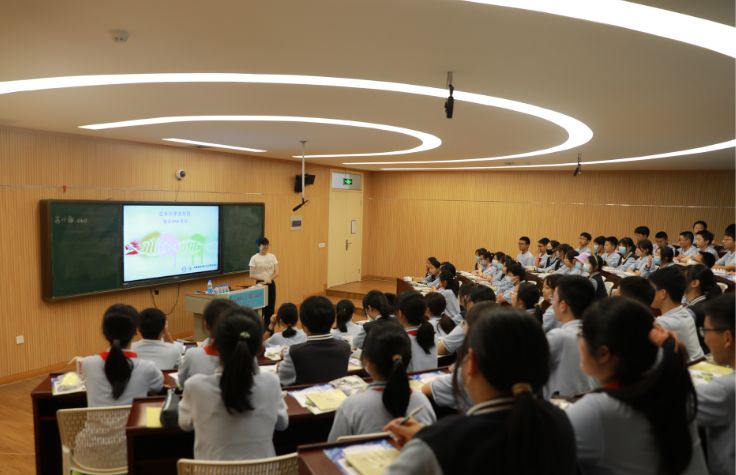
2022年6月30日
Every year for DNA Day in April, Illumina teams organize “The Future Is Bright” activities around the world to inspire students’ STEM learning through community partners and educators teaching genomics in their classrooms. This year, the company partnered with Cold Spring Harbor Asia DNA Learning Center to expand these activities into China for the first time.
Together, the partnership launched “Bringing Life Science to Campus - Deciphering DNA,” an education program dedicated to public welfare. The program encompassed offline and online classes offered to more than 1,000 primary and secondary school students in nine schools in Guizhou Province, Shaanxi Province, Jiangsu Province, and other provinces and cities June 1–14.
Teachers from Cold Spring Harbor Asia DNA Learning Center and Mark Wang, Director of Medical Affairs, Illumina Greater China, shared their genomics knowledge with students through a variety of topics, including nucleic acid testing and DNA sequencing, and explained the scientific principles behind commonly seen phenomena such as inherited traits and genetic mutations in rare disease. The courses included experiment kits to give students a hands-on experience in building double-helix models and mapping DNA sequences while learning about the genetic characteristics of different animals.

“Over the years, Cold Spring Harbor Asia DNA Learning Center has organized various life science activities on campus to inspire students’ scientific thinking,” says Du Cheng, the center’s director. “This year, we are very pleased that industry professionals joined us in the action to improve the scientific literacy of youngsters. Through interactive practices in classes, we guided these children through the world of life science and the mysteries of genes.”
Sharon Vidal, global lead of corporate responsibility at Illumina, adds: “We are committed to equitable access to STEM education, working with our partners to help educators explore applications of genomics and to build education communities. Through direct programming, philanthropy, and employee engagement, we hope to ignite learners’ interest in genomics education and empower the next generation to envision themselves as future scientists, innovators, and trailblazers. Our goal is to reach 5 million learners by 2030. More than 800,000 STEM learners have already benefited from related activities organized by Illumina.”
Beginning last year, Illumina Greater China began working with well-known social media influencer, Hunzhi to create a series of comics and videos about next-generation sequencing. The aim is to link scientific knowledge with daily life and raise public awareness of DNA sequencing and its value.
Illumina teams continue to draw from experiences successfully organizing STEM education activities around the world to build broader partnerships with organizations like Cold Spring Harbor. Providing more Chinese young people with access to educational resources and activities about genomics will inspire their thinking and equip them to pursue their goals.
“Every student should have the opportunity to unlock their potential in science,” says Li Qing, global senior vice president and general manager of Illumina Greater China. “We are willing to work with more partners to create chances for young students in the world of genetic science, and to expand future possibilities for the next generation.”
About Cold Spring Harbor Asia DNA Learning Center
Cold Spring Harbor Asia DNA Learning Center was jointly established in July 2015 by the Administrative Committee of Suzhou Industrial Park and Cold Spring Harbor Laboratory, which is currently the largest institution of its kind in the Asia-Pacific region and the first institution that focuses on genetic science education and knowledge sharing in China.
About the Future Is Bright program
In celebration of DNA Day each year, Illumina hosts The Future Is Bright, a monthlong genomic literacy initiative. Illumina employees connect with students by hosting career panels, implementing genomics curricula, and leading hands-on experiments. This learning opportunity ties together genomic research, education, and community impact. In 2022 alone, the program has reached more than 90,000 learners, 1,600 community partners, and 130 events with 1,500 employee volunteer hours.


